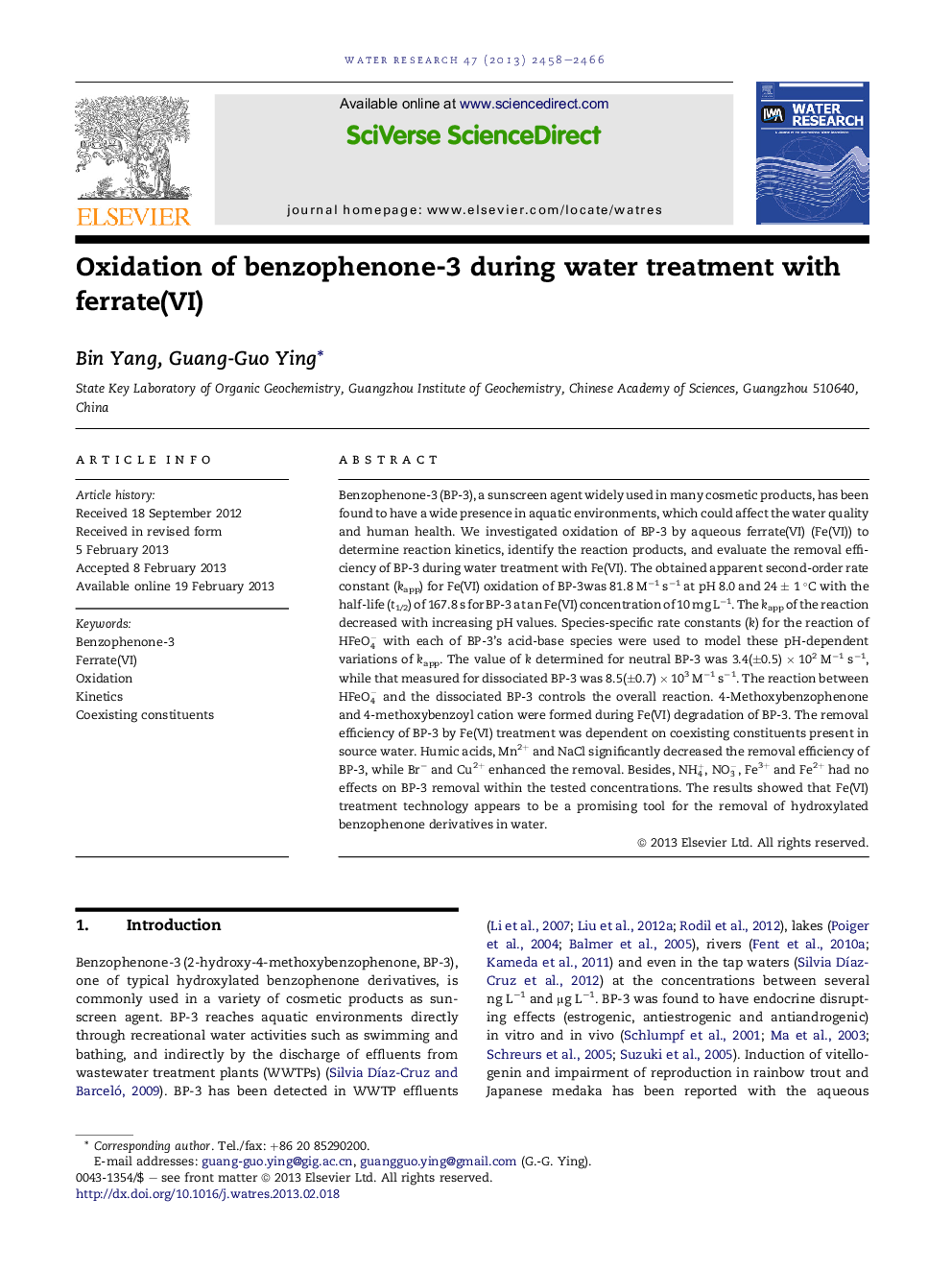| Article ID | Journal | Published Year | Pages | File Type |
|---|---|---|---|---|
| 4482296 | Water Research | 2013 | 9 Pages |
Benzophenone-3 (BP-3), a sunscreen agent widely used in many cosmetic products, has been found to have a wide presence in aquatic environments, which could affect the water quality and human health. We investigated oxidation of BP-3 by aqueous ferrate(VI) (Fe(VI)) to determine reaction kinetics, identify the reaction products, and evaluate the removal efficiency of BP-3 during water treatment with Fe(VI). The obtained apparent second-order rate constant (kapp) for Fe(VI) oxidation of BP-3was 81.8 M−1 s−1 at pH 8.0 and 24 ± 1 °C with the half-life (t1/2) of 167.8 s for BP-3 at an Fe(VI) concentration of 10 mg L−1. The kapp of the reaction decreased with increasing pH values. Species-specific rate constants (k ) for the reaction of HFeO4− with each of BP-3's acid-base species were used to model these pH-dependent variations of kapp. The value of k determined for neutral BP-3 was 3.4(±0.5) × 102 M−1 s−1, while that measured for dissociated BP-3 was 8.5(±0.7) × 103 M−1 s−1. The reaction between HFeO4− and the dissociated BP-3 controls the overall reaction. 4-Methoxybenzophenone and 4-methoxybenzoyl cation were formed during Fe(VI) degradation of BP-3. The removal efficiency of BP-3 by Fe(VI) treatment was dependent on coexisting constituents present in source water. Humic acids, Mn2+ and NaCl significantly decreased the removal efficiency of BP-3, while Br− and Cu2+ enhanced the removal. Besides, NH4+, NO3−, Fe3+ and Fe2+ had no effects on BP-3 removal within the tested concentrations. The results showed that Fe(VI) treatment technology appears to be a promising tool for the removal of hydroxylated benzophenone derivatives in water.
Graphical abstractFigure optionsDownload full-size imageDownload high-quality image (82 K)Download as PowerPoint slideHighlights► Ferrate(VI) showed an appreciable reactivity with benzophenone-3 (BP-3). ► The protonated ferrate and the dissociated BP-3 dominated the overall reaction. ► The reaction products 4-methoxybenzophenone and 4-methoxybenzoyl cation formed. ► Coexisting constituents in natural waters influence the Fe(VI) oxidation of BP-3.
